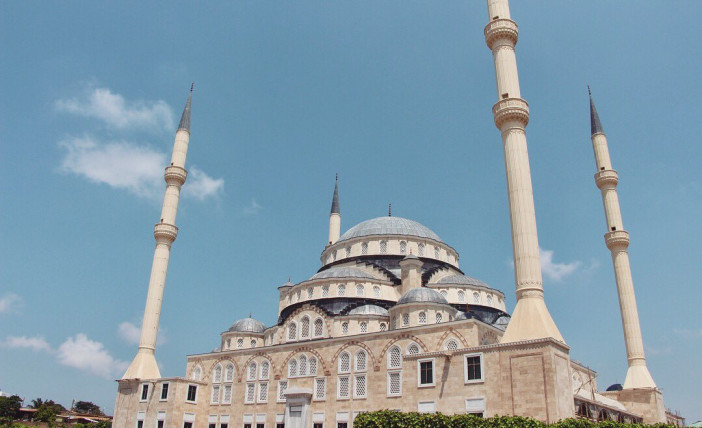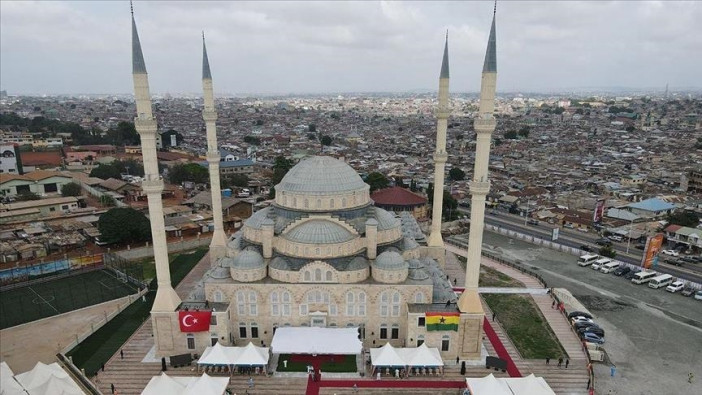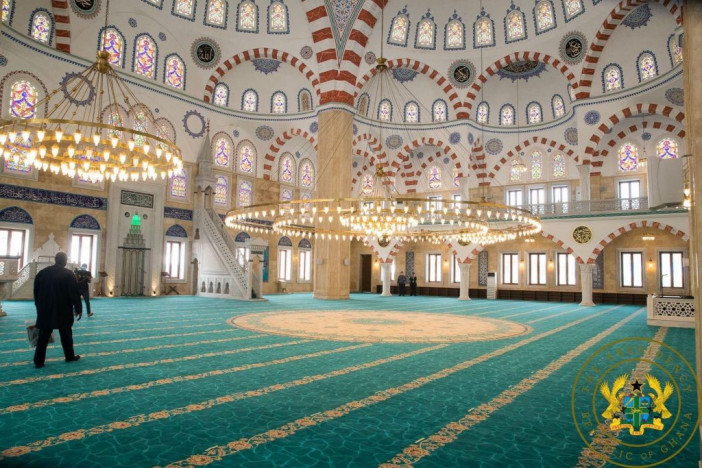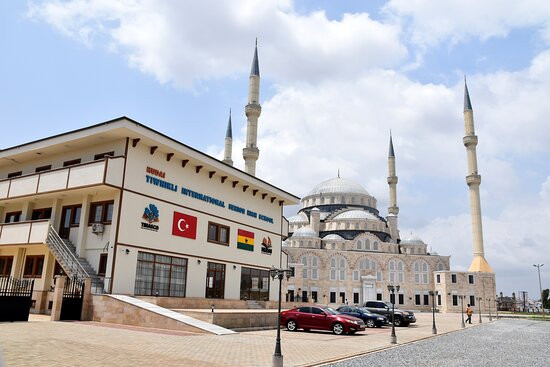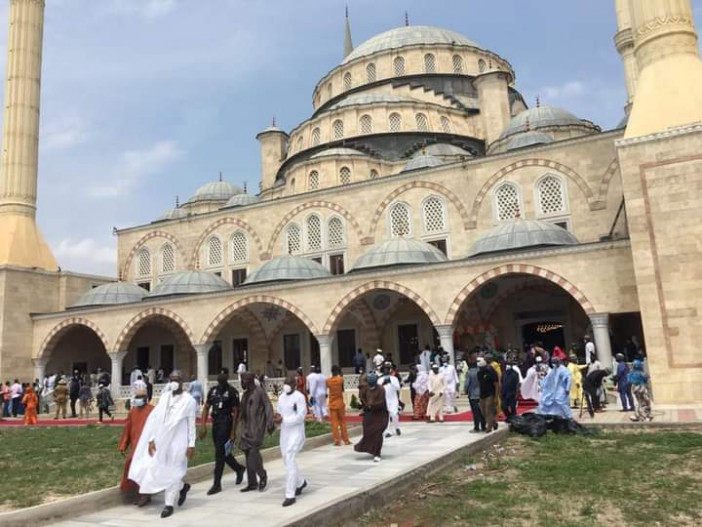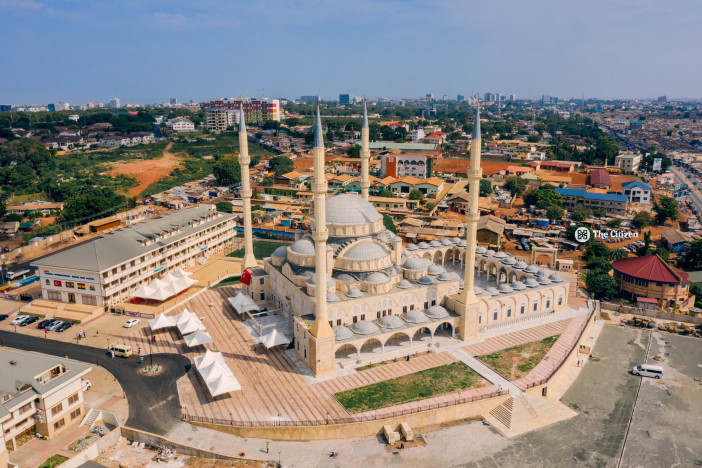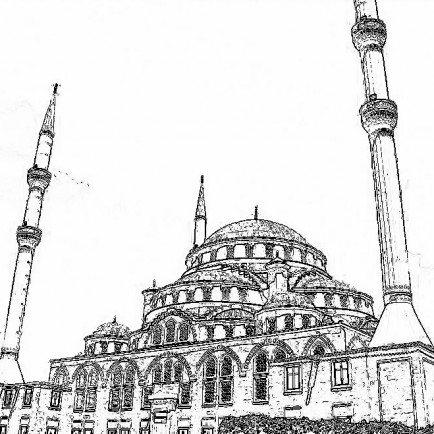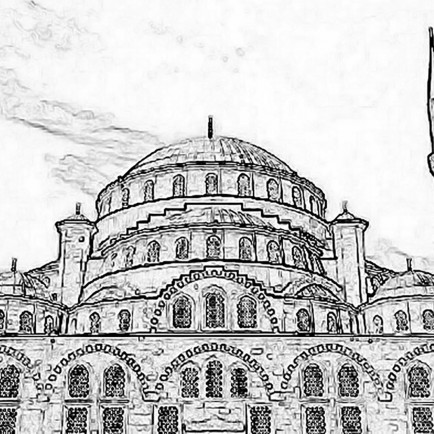Ghana National Mosque
History
Construction started in 2012. In his speech, Osman Nuhu Sharubutu stated Jerry John Rawlings and others had assisted in procuring the land needed to realize the project for Muslims in Ghana. JJ Rawlings donated the land in 1995 to Accra to replace the mosque that he had destroyed to make way for Rawlings Park. The Muslim community in Ghana initiated the project, but it was abandoned after over ten years due to a lack of funding.
Urban and Architectural
The mosque was constructed in the Ottoman revival style, and its four recognizable minarets rise 65 meters above the ground. It is supposedly a copy of the Blue Mosque. Exterior fixtures are composed of carrara marble. Blue paints and stained glass windows with patterns dominate the upper levels of the mosque's interior. Quranic texts in calligraphic hand-drawn script make up the inner decorations. There are rugs covering the flooring. The mihrab in the mosque is composed of marble sculpture, and it is topped by a double inscriptive panel and stalactite niche. Around the main dome, the outside feature is constructed with a cascade of domes.
Description
The mosque complex is said to have a 15,000-seat capacity and was constructed on a 42-acre plot of land. It has an office building housing the National Chief Imam's, project managers', and other employees. It also has a morgue, a library, a school, dorms, worker housing, and guest housing, as well as a clinic equipped with labs and a pharmacy. It has a minaret that is visible from various locations in Accra.
References
https://en.wikipedia.org/wiki/Ghana_National_Mosque
https://www.dw.com/en/ghanas-massive-new-national-mosque/video-58691690
https://www.ghananationalmosque.com/about
Details
Location
Ghana National Mosque Complex, E Kanda Rd, Accra, Ghana
Worshippers
15000
Owners
Turkish Hudayi Foundation
Architect Name
Year of Build
2012
Area
42000
Drawings
Map
History
Construction started in 2012. In his speech, Osman Nuhu Sharubutu stated Jerry John Rawlings and others had assisted in procuring the land needed to realize the project for Muslims in Ghana. JJ Rawlings donated the land in 1995 to Accra to replace the mosque that he had destroyed to make way for Rawlings Park. The Muslim community in Ghana initiated the project, but it was abandoned after over ten years due to a lack of funding.
Urban and Architectural
The mosque was constructed in the Ottoman revival style, and its four recognizable minarets rise 65 meters above the ground. It is supposedly a copy of the Blue Mosque. Exterior fixtures are composed of carrara marble. Blue paints and stained glass windows with patterns dominate the upper levels of the mosque's interior. Quranic texts in calligraphic hand-drawn script make up the inner decorations. There are rugs covering the flooring. The mihrab in the mosque is composed of marble sculpture, and it is topped by a double inscriptive panel and stalactite niche. Around the main dome, the outside feature is constructed with a cascade of domes.
Description
The mosque complex is said to have a 15,000-seat capacity and was constructed on a 42-acre plot of land. It has an office building housing the National Chief Imam's, project managers', and other employees. It also has a morgue, a library, a school, dorms, worker housing, and guest housing, as well as a clinic equipped with labs and a pharmacy. It has a minaret that is visible from various locations in Accra.


